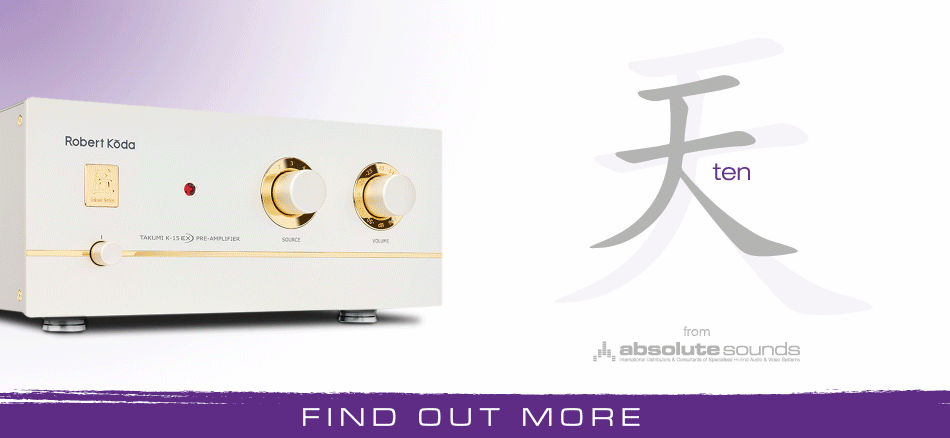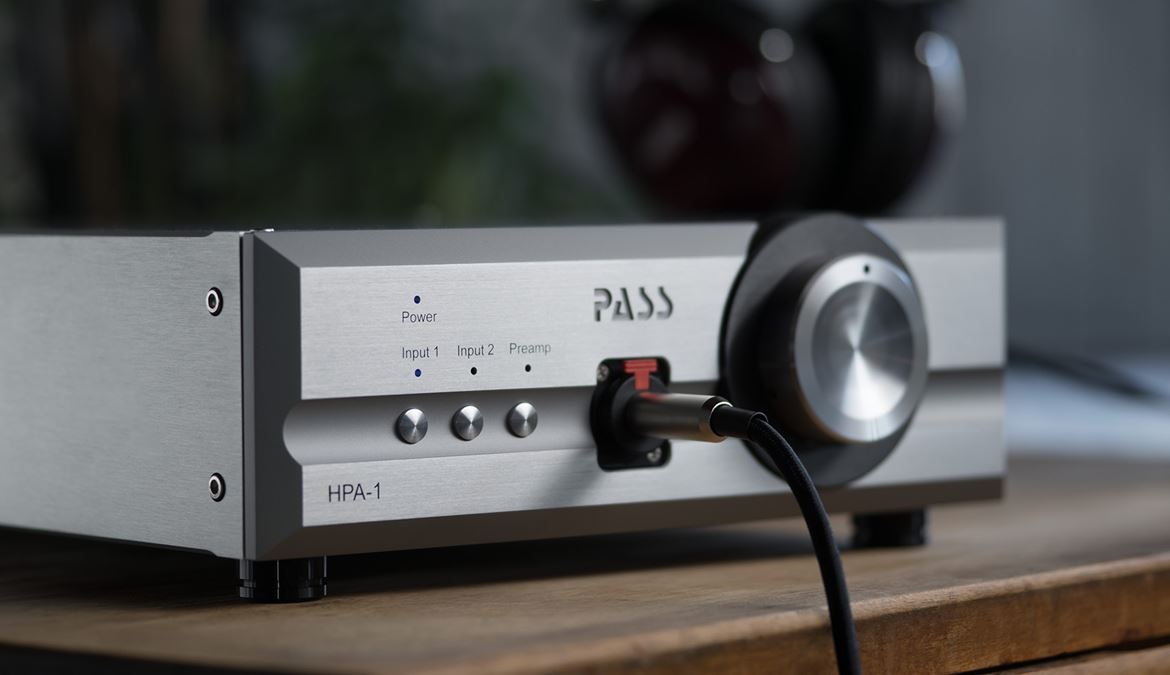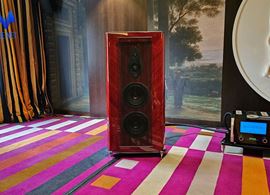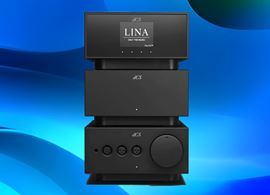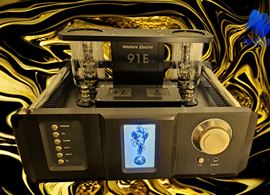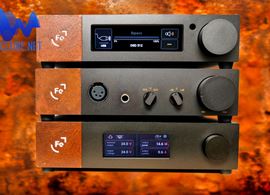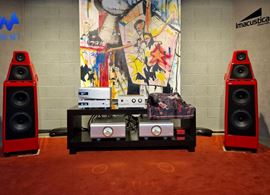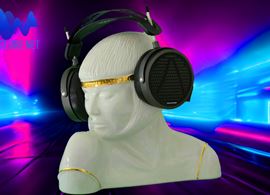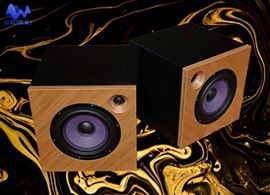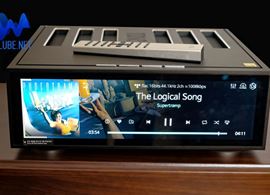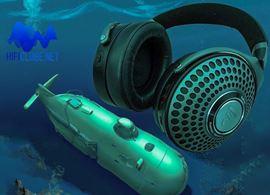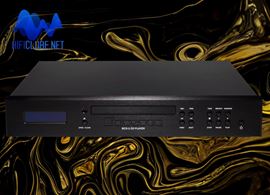Pass Labs HPA-1 is a pure analogue preamp and headphone amplifier created to withstand the test of time.
Nota: review também disponível em Português aqui
I met Nelson Pass for the first time in Las Vegas. I must have spoken to him twice more during CES whenever he introduced new Pass amplifiers to the press. He reminded me of David Crosby, who, at the age of 80, is still active in the music world.
Crosby composes and performs music whilst Pass is 70 years old and has tried all his life to reproduce it to the limit of perfection - technically and artistically.
Nelson Pass's philosophy is that music, what you hear, prevails over what you measure. And an amplifier is better the simpler its electrical circuit is, if possible, with a single transistor, like the First Watt, the watt that really counts, according to Pass.
The HPA-1 headphone amplifier is not as radical in its approach. But it also dispenses with everything considered surplus, including the dual-mono configuration and corresponding balanced output.
Analogue is forever
And, of course, it doesn't have a built-in DAC. All things digital become obsolete in a couple of years. Analogue is forever. The HPA-1 is a pure analogue model from 2016, and Pass isn't even considering an HPA-2 yet. Designed and built as a statement of principle, the HPA-1 is, to date, Pass Audio's sole headphone amplifier.
Interestingly, the HPA-1 was designed not by Nelson Pass nor by Wayne Colburn but by Jam Somasundram, who came from Cary Audio in 2013 and had all the time he needed to build the perfect headphone amplifier.
All things digital become obsolete in a couple of years. Analogue is forever.

Pass Labs HPA-1 main board signed by Jam Somasundram. Photo by JVH
An amplifier is only as good as its power supply
Somasundram started by building the HPA-1 as a line preamplifier with a toroidal amplifier three times the rate required by the circuit, then isolated it with a Faraday shield and fitted the power supply with 40,000 uF of capacitance and discrete component regulation. All this ensures the level of silence (noise floor) required for serious listening with headphones.
Another requirement was the ability to drive all types of headphones with impedances in the range of 15-600 ohms, for which it was necessary to ensure voltages of at least 24V.
Somasundram used J-Fet on the input stage and Mosfet on the direct-coupled power stage. Each is mounted on an independent heatsink in a fully discrete circuit with a minimum of negative feedback.
The output stage is strongly biased in Class A (it gets warm), thus improving the linearity and distortion performance.
Remarkable measurements
All measurements are indeed remarkable. Nevertheless, Somasundram revealed that listening always prevailed over measurements.
Frequency response is flat from 20Hz-200Kz (very wideband circuit) with the potentiometer (Alps) at maximum and remains flat in the audio band with the potentiometer in the 12 o'clock position. Better lab results would have been possible with an electronically regulated volume, but the Alps must have 'sounded' better, I guess.
The separation between channels (over 120dB) is fantastic for a circuit that is not dual mono. The presence of 2nd harmonic distortion could be deliberate (still below -80dB, so not audible), perhaps to give the sound a modicum of valve 'euphony', while the 3rd harmonic and all odd-order components are all below -120dB.
Specifications aren't everything, Jam Somasundram tells us. He likes to 'voice' the sound of his products by ear, playing with bias, feedback, and component choice, which don't necessarily have to be premium.
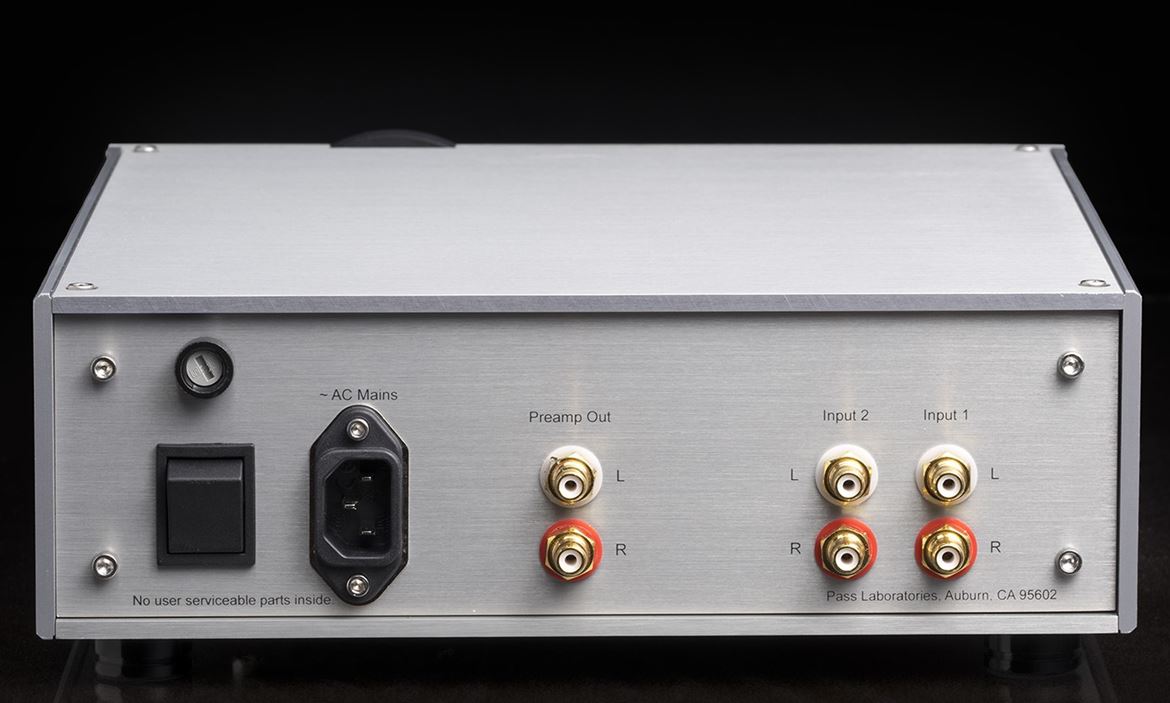
HPA-1 back (photo courtesy Pass Labs)
The HPA-1 is also an excellent preamp, very simple, with just two RCA inputs and a preamp output all switched employing pushbuttons on the front panel controlled internally by a microprocessor with tiny blue LEDs to show status. When switched to preamp on, the headphone amplifier automatically switches off.
Global warming
The power button hides at the back, and Pass suggests you always leave it on. For two main reasons: you don't have to wait the 20 seconds, or so, of activation time, during which the power blue LED flashes, nor the recommended 60 min. for the HPA-1 to warm up and reach peak performance. Of course, Americans don't pay for electricity at the price we do...
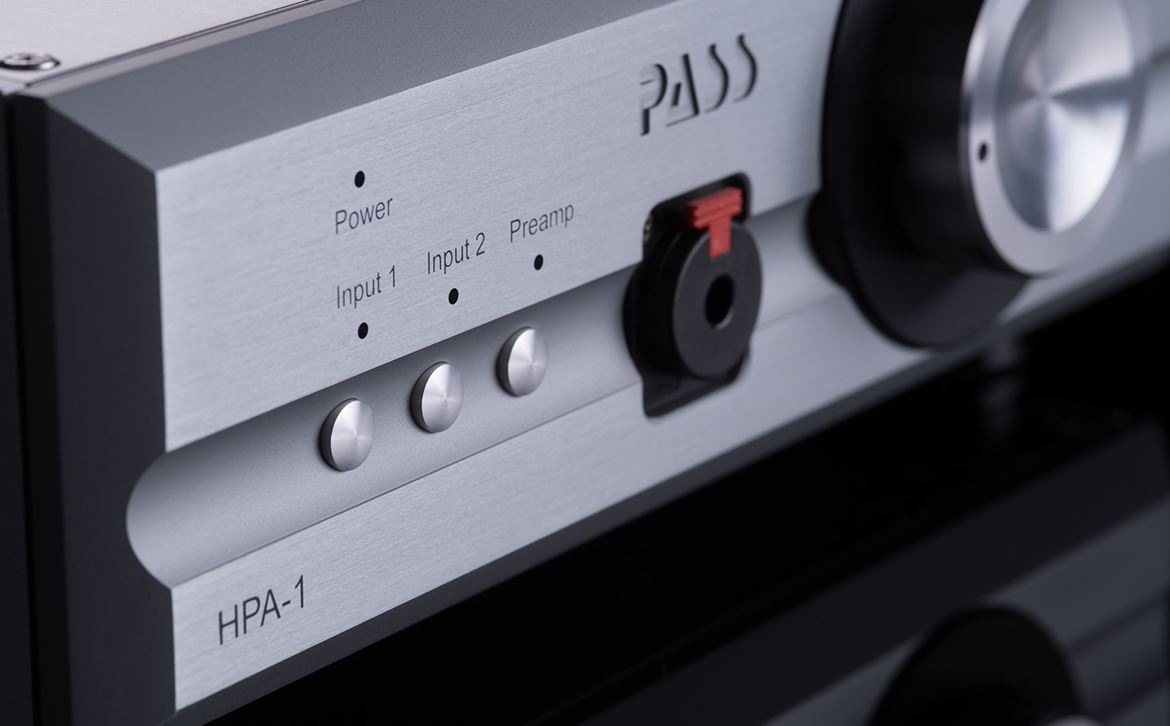
HPA-1 front panel detail (photo courtesy Pass Labs)
With the engraved Pass logo, the thick aluminium front panel is dominated by a huge volume control knob (no remote control), further augmented by the concentric black aluminium bezel.
…Americans don't pay for electricity at the price we do...
The imposing input plug for the 6.3mm Jack (single) is a Neutrik professional type. To remove the Jack, you must press the small red lever. It looks ugly on the front panel, but it is reliable and the best possible connection for headphones, according to Pass.
The construction is robust and of the vault-type, with 4mm aluminium plates fastened with hex bolts on L-shaped angle brackets. The HPA-1 is not a toy; it's serious stuff and a pleasure to own for life. You only need to remove the cover and look inside to realise that Pass is not messing around.
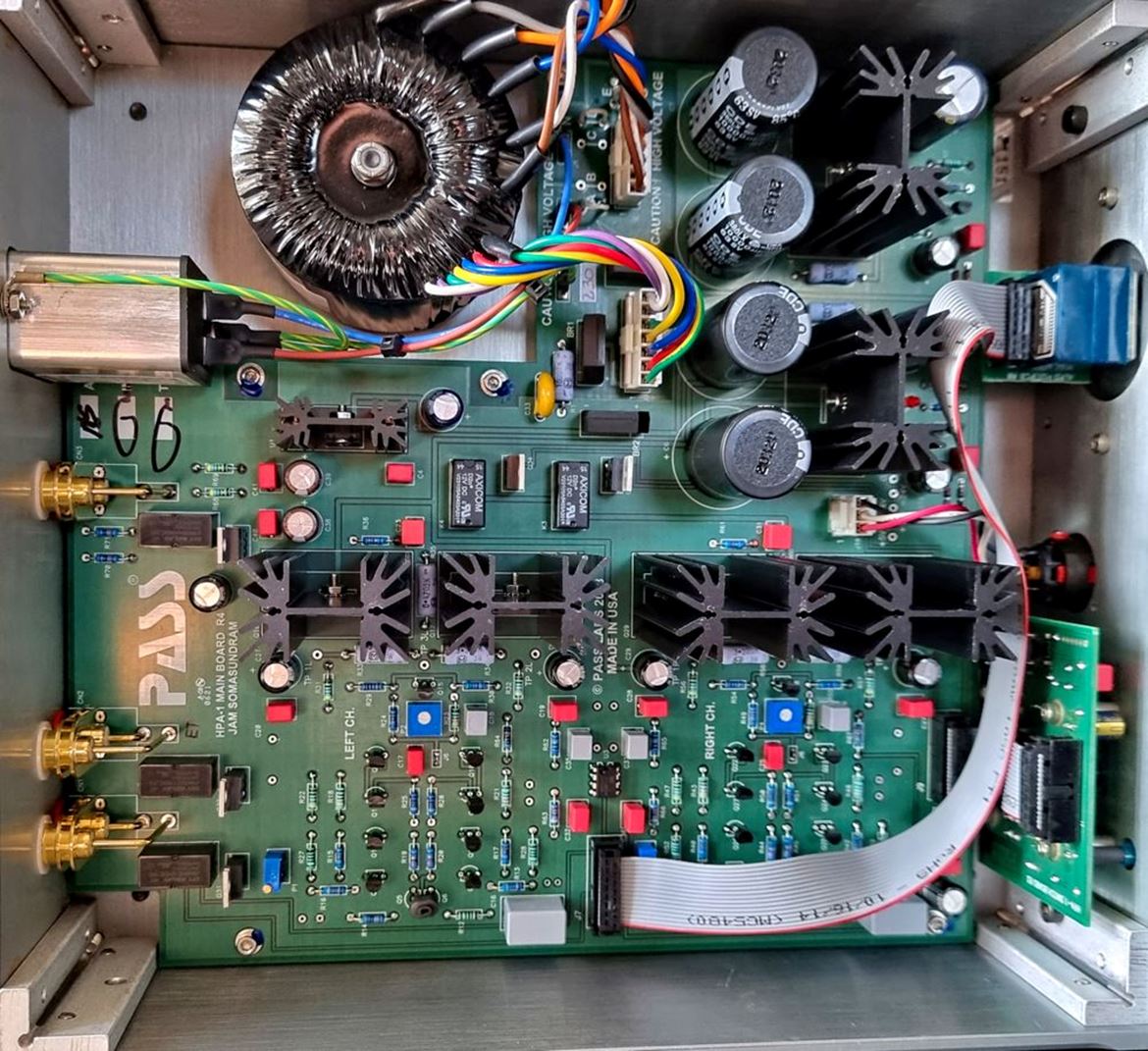
HPA-1 interior: a work of art. Photo by JVH
Family name matters
Delaudio, which distributes Pass Labs in Portugal, puts a 4.450 euros tag on this audiophile industrial work of art. Some headphone amplifiers offer DAC (obsolete after two years) balanced outputs and equal drive power for this price. But it's not a Pass. And in the high-end market, the family name matters—a lot.
The HPA-1 captivates you to follow the ongoing musical process, with authority, gravitas, and a fluid, creamy midrange (Mosfet are the best substitute for valves) supported by the unsurpassed quality of low-frequency reproduction against a backdrop of pitch-black silence. Detail is delivered exquisitely: it reveals everything with finesse within a natural and verisimilar soundstage. Tonally, it is on the warm side of neutral.
…detail is delivered exquisitely: it reveals everything with finesse…
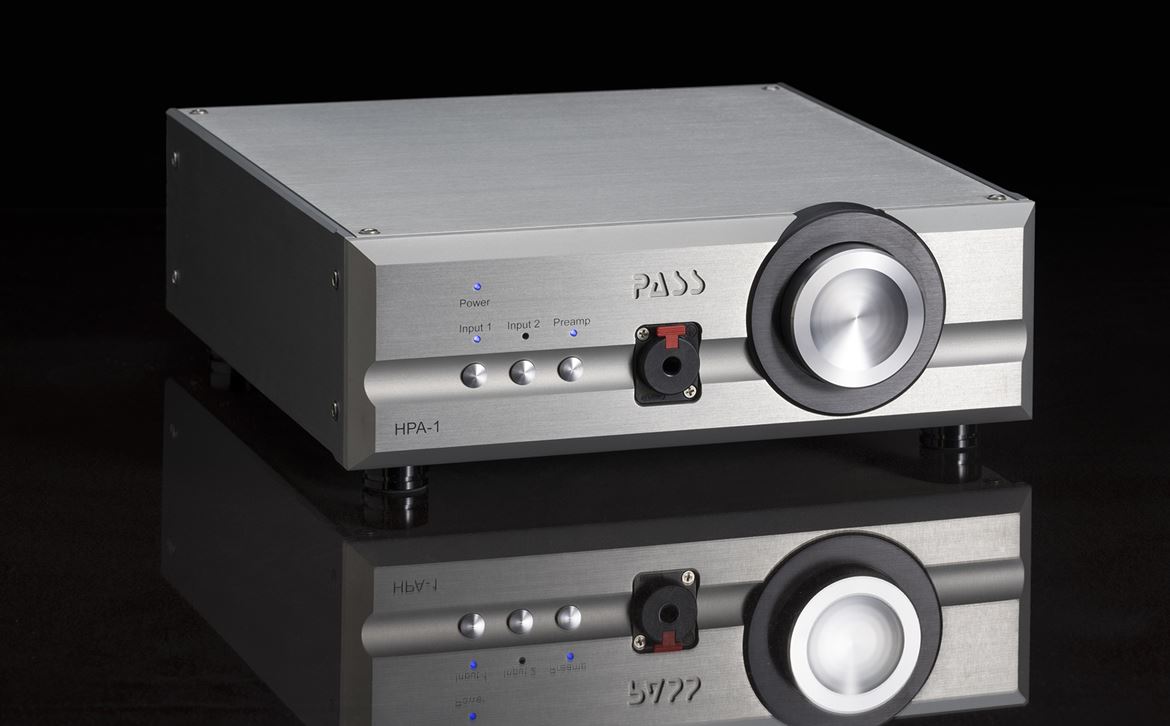
HPA-1 front reflection (photo courtesy Pass Labs)
Suppose you've invested three or four thousand euros in a top pair of magnetic planar headphones, such as the Audeze, Hifiman or Meze Audio, or some dynamic Focal Utopia. In that case, you owe it to yourself to enjoy listening to them powered by a Pass Labs HPA-1.
Allow me to give you a few tips from Tidal to get you started:
- Adam Naas, You Should Know (Brothers and Sisters)
Get ready to hear a powerful, deep synthesised bass that never overpowers Adam Naas' blown, guttural voice.
- Betty Lavette, Things Have Changed
Betty sings the music of Bob Dylan on a record to listen all the way through. Those who know better, never forget. And the backing band helps rewrite Dylan in the rhythm department too. The recording is not perfect, and I think I hear distortion here and there. But I think the idea was to achieve a raw sound. The interpretations are breathtaking. All of them.
'What Is It You Wanted', with Trombone Shorty, is a masterpiece - and, what else?, 'The Times They are A-Changin’, idem. Yet, Betty Lavette seems to have also passed the test of time: she is not ‘a-changin with time’ like the rest of us mortals.
Listening to her singing with a pair of Hifiman HE1000 driven by the HPA-1 via Roon/Tidal and a Chord Hugo 2 DAC is an eventful and unforgettable experience.
- Listen to David Crosby (the Nelson Pass look-alike), on 'For free' in a duet with Sarah Jarosz. Oh, how human the voices sound, natural, underlined by the piano notes over the velvet petals of the bass.
I've given you only three tips; I bet you'll want a dozen because Pass HPA-1's sound is irresistible. One turns musically gluttonous while listening to the HPA-1. Since you're going to leave it always on anyway, you may as well enjoy it every single day. It’s a win-win situation.
Pass Labs HPA-1, preamp and headphone amp
Distributor: Delaudio
Price: €4,450

